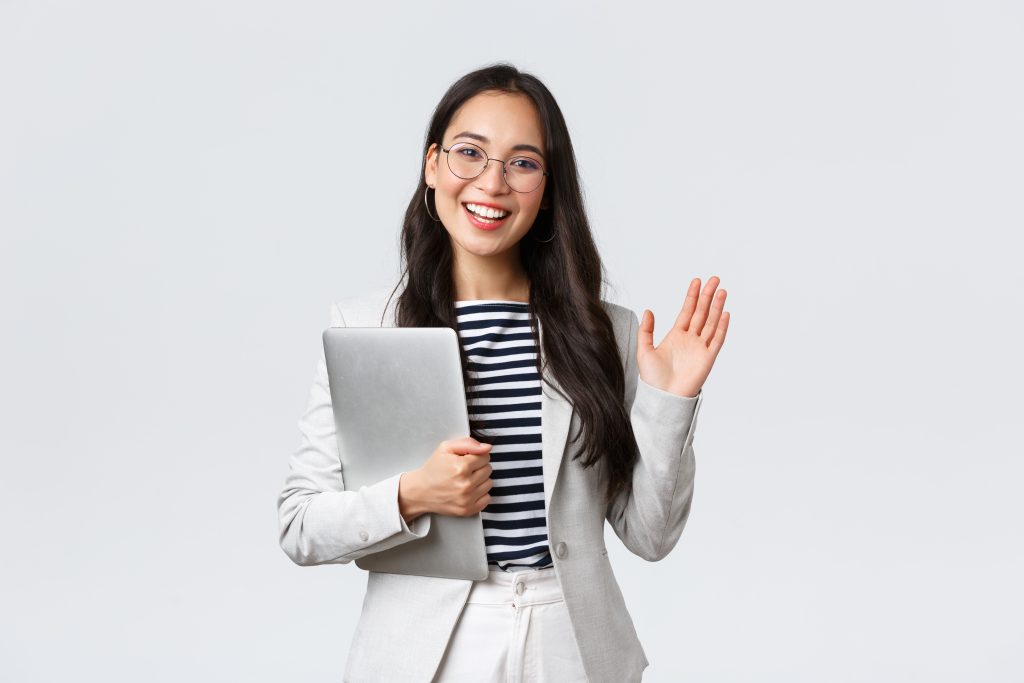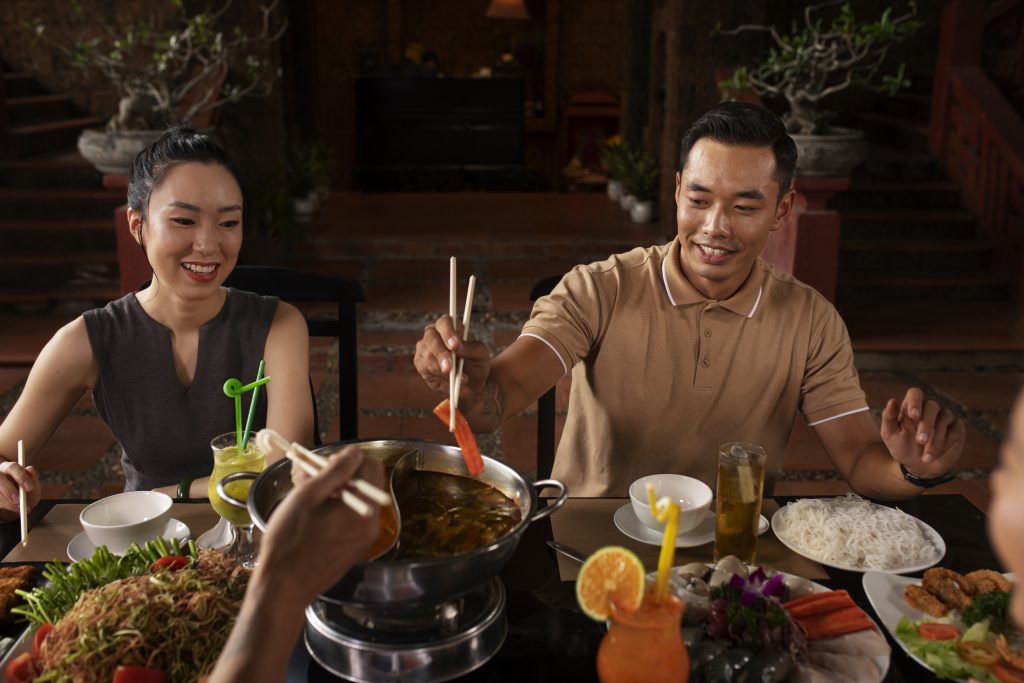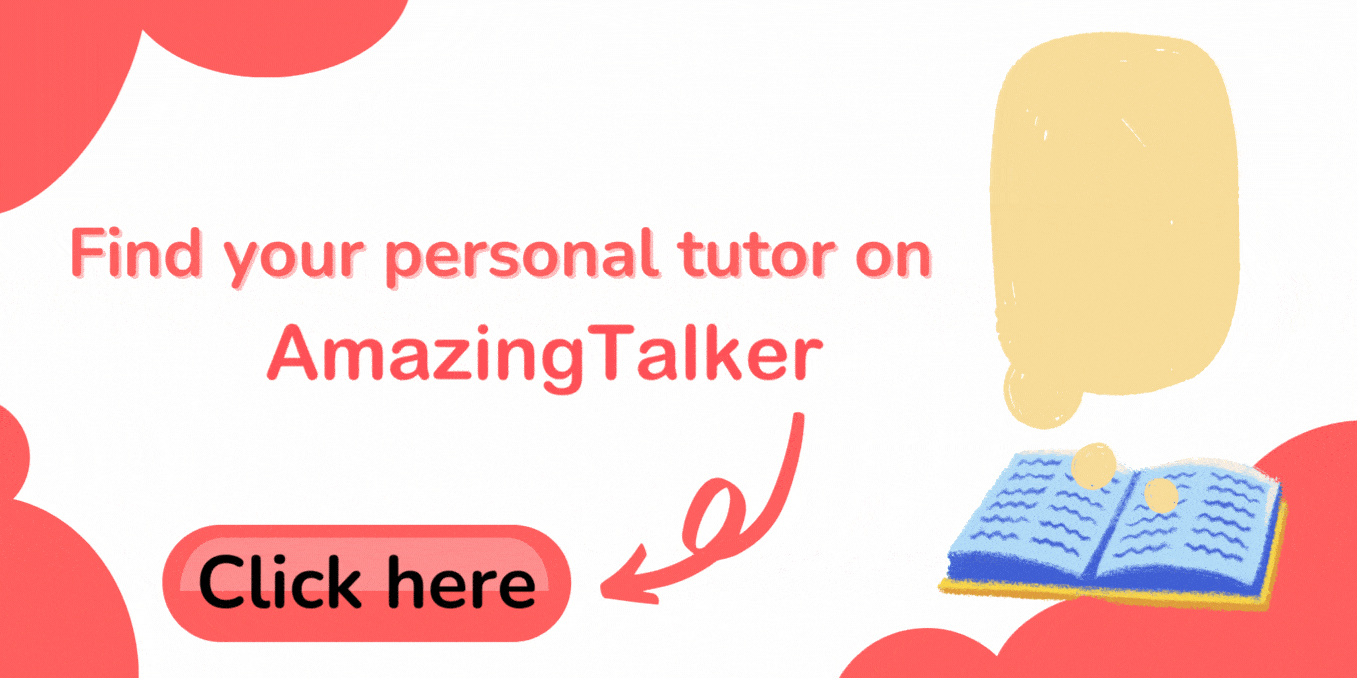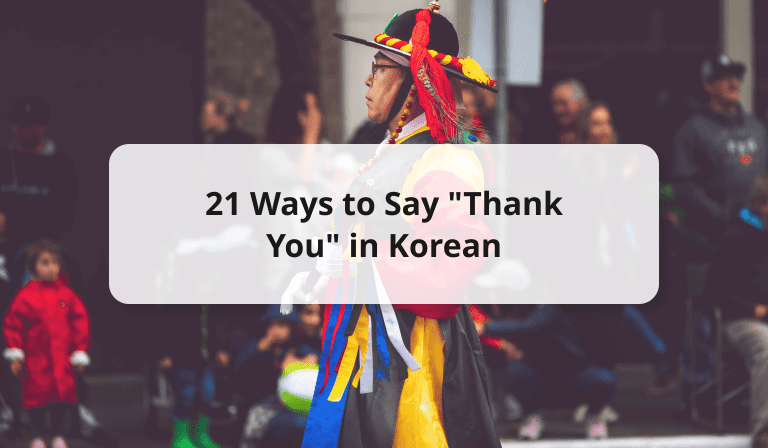When you are in Korea, do you ever want to know how to say thank you in Korean? Learning different ways to say ‘thank you’ in different scenarios doesn’t only make you sound more natural in speaking the language, but also helps you know the country’s culture even more. The most common way to say thank you in Korean is 감사합니다 – (gam-sa-ham-ni-da); however, this phrase cannot be used in every situation. It is important to find the right form to use with the right scenario. In Korea, using the wrong form might be considered impolite, and sometimes may lead to conflict.
In this article, we are going to introduce how to say ‘thank you’ in different forms in Korean, and how to be more polite to say them with body language. Also, we are going to introduce how to show your appreciation in some daily situations. Before starting your Korean language journey, check out how to read the Korean alphabet!

Table of Contents
How to Say Thank You in Korean-Formal Form
-
니다 | Gomabsimida
-
감사합니다 | Gamsahamnida
Using the formal form to say ‘Thank You’ is always the safest way- it is okay to use to everyone you met. These two phrases share the same meaning and are both commonly used. It can be spoken to waiters, strangers, and to people who are older or more powerful than you. It might sound a little bit stiff to use to friends, but it will not be the wrong choice.
How to Say Thank You in Korean-Polite Form
-
고마워요 | Gomawoyo
-
감사해요 | Gamsahaeyo
Using polite form to say thank you could be tricky sometimes. It is not formal enough to use to people who you are not familiar with or to people who are older than you, but sometimes too formal to use to a friend. The polite form is usually used to people you are familiar with but older than you, or acquaintances with the same age when you try to be polite but do not tend to sound too formal.
How to Say Thank You in Korean-Casual Form
-
고마워 | Gomawo
-
감사해 | Gamsahae
Casual form can only be used to people who are the same age as you or younger than you. So, it will be safer to just use these phrases to close friends.
‘고마워’ (Gomawo) is more commonly used and would sound more natural than ‘감사해’ (Gamsahae). People could understand you with ‘감사해’ (Gamsahae) as well, so don’t afraid to use it!
There are also more fun ways to say thank you to your friends!
‘감사’ (Gamsa) is the noun of appreciation, thus some young generations use it as a slang to say ‘thank you’ to their friends. To be more simplified, when texting friends, some young generations use ‘ㄱㅅ’, which are the consonant of ‘감사’ (Gamsa) to represent the word.
Also, as English is becoming popular in Korea, people started to use ‘땡큐’ (Ddengkyu) as a slang, which is the transliteration from ‘thank you’. It could be used in conversation and texts.
In Korean culture, bowing and nodding are often used to be polite when greeting, saying goodbye, and showing appreciation, and in different situations, you might need to bow to a different extent!
In business or formal events, a 90-degree bow might be needed. Korean usually have 90-degree bows when facing people who are your clients or more powerful than you, to show sincere appreciation or apologies. For example, when you are wrapping up a speech, or making a deal with your client, it will be suitable for a 90-degree bow.
In other scenarios in daily life, a 90-degree bow might be too formal. In those cases, a slight 15-degree bow is suitable. When showing appreciation to waiters or help from others, saying ‘고맙습니다’ (Gomabsimida) or ‘감사합니다’ (Gamsahamida) with a 15-degree bow is the most commonly used combination.
When saying thank you in the polite form or the casual form, there is no necessity to bow. Bows might be too formal to do in between friends and people that you are familiar with. Thus, only bow when using formal forms.

How to Say Thank You in Korean with Body Language
One way to express gratitude could be by saying “i love you” in Korean, but there are more ways to say thank you in non-verbal ways like with your body language.
How to Say No Thank You in Korean
-
괜찮아요 | Gwenchanahyo | It’s fine | Polite
-
아니에요 | Aniaeyo | No | Polite
When you are trying to refuse some offers, it is most seen to response with these two phrases. These two phrases are in polite form, but they are suitable for daily situations such as in restaurants or in stores. However, if you want to use them in formal events or to older people, you should use the following form.
-
괜찮습니다 | Gwenchanseumnida | It’s fine | Formal
-
아닙니다 | Animnida | No | Formal
Simply combine them with ‘고맙습니다’ (Gomabsimida) or ‘감사합니다’ (Kamsahamida) to sound more polite when saying ‘no thank you’!

How to Say Thank You for the Meal in Korean
-
잘 먹었습니다 | Jal meogeotseumnida | I had a good meal | Formal
In Korea, it is common to use this phrase to say thank you to the people in the restaurant, or whoever prepares the meal for you, to show your appreciation for their food. If you are invited to a dinner party, you should use this phrase after you finish the meal, or you can simply say to the waiters when leaving the restaurant. However, if you want to thank someone that you are close to, you can change this into the polite form to be less stiff:
-
잘 먹었어요 | Jal meogeotseoyo | I had a good meal | Polite
How to Say You’re Welcome in Korean
In Korean, the most common and safest way to response a ‘thank you’ with:
-
괜찮습니다 | Gwenchanseumnida | It’s fine | Formal
-
아닙니다 | Animnida | No,Thank you | Formal
Based on how close to the people you are talking to, you can also use the polite form ‘괜찮아요(Gwenchanahyo)’ and ‘아니에요 (Aniaeyo)’, or the casual form ‘괜찮아(Gwenchanah)’ and ‘아니야 (Aniaeya).
There are some more ways to say ‘you are welcome’ in Korean:
-
별말씀을요 | Byulmalsseumeulyo | Don’t mention it
This phrase is a formal way to response to a ‘thank you’, which are less used in daily conversation.
-
천만에요 | Chunmanaeyo | You’re welcome
천만에요(Chunmanaeyo) is a more formal way to say you’re welcome, which is the least commonly used in daily life. It usually appears only in very formal situations.

15 More Ways to Say Thank You in Korean
Learning other ways to say thank you is one of the best ways to learn Korean! Keep reading to see 15 other phrases to express gratitude in Korean!
-
대단히 감사합니다 | Daedanhi gamsahamnida | Thank you very much. | Formal
This is the most formal way you can say thank you. It might be heard during announcements like during a speech and isn’t often said in regular conversation.
-
진심으로 감사드립니다 | Jinsimeuro gamsadeurimnida | Thank you very much. | Formal
This is another formal way to say thank you very much, which sounds like ‘to thank you form the bottom of my heart’, to show your sincerity.
-
정말 고마워요 | Jeongmal gomawoyo | Thank you very much | Polite
This phrase can be use when you don’t want to sound too formal to say ‘대단히 감사합니다’ (daedanhi gamsahamnida), but want to be more sincere. Also, you can use it in casual form ‘정말 고마워 (jeongmal gomawo) to your close friends.
-
너무 고마워 | Neomu gomawo | Thank you very much | Casual
This is a substantial phrase to ‘정말 고마워요’ (jeongmal gomawoyo), and is a more casual way that you can use with your friends!
-
진짜 고마워 | Jinjja gomawo | Thank you very much | Casual
Another spoken language to say ‘thank you very much’ to your friends. Some people emphasize or double the ‘Jinjja’ to sound more sincere.
-
도와 주셔서 감사합니다 | Dowa jusyeoseo gamsahamnida | Thank you for your help | Formal
This phrase is helpful and often used when you want to thank people for their help. This is used especially when you are not close to the one who is helping you.
-
와 주셔서 감사합니다 | Wa jusyeoseo gamsahamnida | Thank you for coming | Formal
When you are organizing an event and want to thank your participants for coming, this phrase is suitable for you! This is also useful when showing appreciation to older people for their appearance for you.
-
연락 주셔서 감사합니다 | Yeonrak jusyeoseo gamsahamnida | Thank you for reaching out to me | Formal
When you receive a call or an email from a person, you can use this sentence to show your appreciation for their contact.
-
잘 먹겠습니다 | Jal meokgetseumnida | Thank you, I will eat well | Formal
In the previous section, we learnt how to show appreciation after a meal. This phrase is used when we thank the people who prepare the meal for us before we start eating.
-
알려 주셔서 감사합니다 | Allyeo jusyeoseo gamsahamnida | Thank you for letting me know | Formal
This could be used when you get some information from others, or when others answer your questions. This could also be used when someone teaches you something.
-
칭찬해 주셔서 감사합니다 | Chingchanhae yeonrak jusyeoseo gamsahamnida | Thank you for the compliment | Formal
When getting compliments from others, this is a phrase to take the compliment confidently. Or you can say 아니에요 (Aniaeyo) to sound more humble.
-
초대해 주셔서 감사합니다 | Chodae hae yeonrak jusyeoseo gamsahamnida | Thank you for inviting me | Formal
This could be used when you are invited to an event. You can say it the time when you got invited, or the time when you arrive at the event.
-
선물 감사합니다 | Seonmul gamsahamnida | Thank you the gift | Formal
This phrase is used when you receive gifts from others. 선물 (seonmul) means gifts, and you can replace it with other nouns. Also, you can replace ‘감사합니다’ (Gamsahamida) with polite or casual form when receiving gifts from your friends.
-
시간 내 주셔서 감사합니다 | Sigan nae jusyeoseo gamsahamnida | Thank you for your time | Formal
When you want to show your appreciation to people who spare their time for you, especially something formal. For example, this could be used to start your presentation or speech!
-
어떻게 감사를 드려야 할지 모르겠네요 | Eotteoke gamsareul deuryeoya halji moreugenneyo | I don’t know how to express my appreciation | Formal
This is another expression when you appreciate help from others very much, usually used when receiving significant help from others. This is usually used in formal event.
Most Common Ways To Say Thank You
| Korean | English Pronunciation | English Meaning |
| 정말고마워요 | Jeongmal gomawoyo | Thank you very much (polite) |
| 고마워요 | Gomawoyo | Thank you very much (formal) |
| 감사해요 | Gamsahaeyo | Thank you (formal) |
| 감사합니다 | Gamsahamnida | Thank you (formal) |
| 아니에요 | Aniaeyo | No (Polite) |

The most common way to say thank you in Korean is 감사합니다 – (gam-sa-ham-ni-da). It can be spoken to waiters, strangers, and to people who are older or more powerful than you. It might sound a little bit stiff to use to friends, but it will not be the wrong choice.
‘고마워’ (Gomawo) is more commonly used and would sound more naturally. It is a more casual term to say Thank you in Korean.
Gamsahae for Your Time!
In Korea, it is always important to use different forms in different situations. After all, we don’t want to sound rude to others when speaking in their language. In this article, we have learnt how to say’ thank you’ in different scenarios, but the key to using them right is with practice. AmazingTalker is a great tool to help you practice these expressions with Korean tutors and clarify when to use the right form. Practice makes perfect, and don’t give up on learning!
Discover the answers to your language-related questions on AmazingTalker’s Q&A page.
Try learning other ways to express gratitude in different languages, like thank you in Japanese or thank you in Indonesian!

















